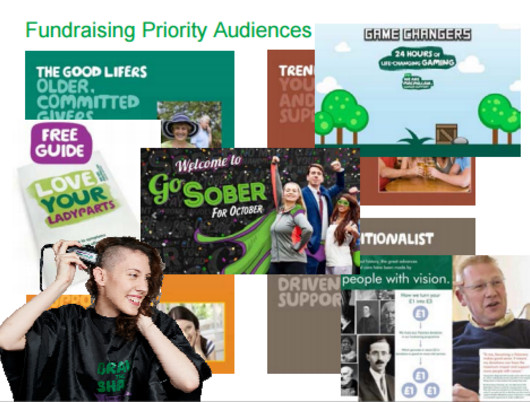A session at last week’s Charity Technology Conference about why Macmillan embraced analytics reminded Fran Swaine just how powerful data can be for charities.
At last week’s Charity Technology Conference, organised by Civil Society Media, there were sessions covering topics about data, digital, strategy and leadership. But the one I was most excited to see was Clara Avery, head of research and insight at Macmillan Cancer Support, explaining how her charity had unlocked its potential by delving into their data.
Macmillan is one of the UK’s biggest charities so we’d expect great things from them. Back in 2007 however, its growth wasn’t looking so hot. It wasn’t doing badly - but it certainly weren’t making the most of its growth potential. By investing in analytics and improving business intelligence process, Macmillan was able to enjoy faster and more significant growth than all of the other top charities and by 2015 became the second top charity by voluntary income.
Data is a critical asset
Data is so important for charities. Every single marketing decision that you make should be based on a piece of data. Yet so often this isn’t the case. Charities are usually great at collecting data but so often don’t do anything with it.
It seemed like this certainly rang true with Macmillan. Avery admitted that Macmillan were great at collecting and analysing data but weren’t so great at being strategically motivated by their data and were even worse when it came to reporting and sharing results. By integrating data into the heart of everything they do, there has been a big shift in this thinking and finally most areas of the organisation are starting to recognise that data is a critical asset.
What is data?
When we talk about data we can mean a lot of things. Data can be any statistic on your supporters or about your charity that can back up your activity. This might be surveys, demographic data, behavioural data collected from your website that tells you how your supporters are interacting with your site, Facebook likes, Twitter retweets, and much, much more.
Macmillan started by looking at three key areas of their data:
- Profile data - Who were the charity’s supporters?
- Activity data - What was Macmillan doing with them?
- Response data - What were their supporters doing in response?
Data-driven fundraising
Macmillan found that good data driven fundraising was far better when it felt personal so they spent a good chunk of time developing their charity’s personas to ensure they really understood their different types of donors.
This meant they could then get a better understanding of what these personas wanted and how they could engage them. For example for younger audiences they developed ideas such as #shaveorstyle and Go Sober for October.

Applying data insight
Once Macmillan started applying the insights they found from their data they saw real results. For example, Macmillan coffee mornings have always been immensely popular. Back in 2008 they were raising about £5m. Macmillan suspected there were far more opportunities for growth here and by using analytics they could analyse where that growth was and target people more effectively. Staff started by looking at which events were raising lots of money and where those events were. They could then put more time and energy into helping to promote those events to help raise even more funds.
By doing this they managed to increase the funds raised from coffee mornings alone to a whopping £26m in 2015.
Data shouldn’t be scary
One of the key points Avery stressed in her talk was understanding internal barriers. One of the biggest barriers we often see with charities, is that people don’t really understand their data. Someone might have sent them a report, it has a lot of numbers in it, maybe a shiny graph, yet they have no clue what it actually means or what to do with it. As a result, it gets ignored - even if it’s saying something incredibly important and useful.
That’s not the fault of the person receiving the report, it’s the fault of the person who put it together. Data doesn’t have to be terrifying and difficult. In fact, it should be fun and accessible!
Key points
It was great to hear that even a huge charity like Macmillan has struggled to use their data effectively. Yet there are definitely steps every charity can take to start harnessing the power of their data:
- Is the data credible - Spend the time and money ensuring the data is being captured correctly. Has tracking been installed? Can you easily access it?
- Use benchmarking - Before you embark on integrating data into your charity, you’ll want to make a note of your current activities. This will allow you to assess your success later on.
- Get your team on board - Avery mentioned one of the biggest barriers to integrating data into every area of Macmillan was internal barriers. Make sure your team understand why data is so important and the power it can have. Ensure they understand any new reports or data coming their way.
- Make it relatable - Charities need to understand how the figures in a report relate to the people they are supporting. A great way of achieving this is putting together personas for your supporters.
- Share your successes - People are much more likely to engage with data if they can see it works. Macmillan could use its Coffee Morning example to prove the effectiveness of data and the impact it has had on generating income.
Fran Swaine is head of digital at Platypus Digital. She tweets @FranSwaine









